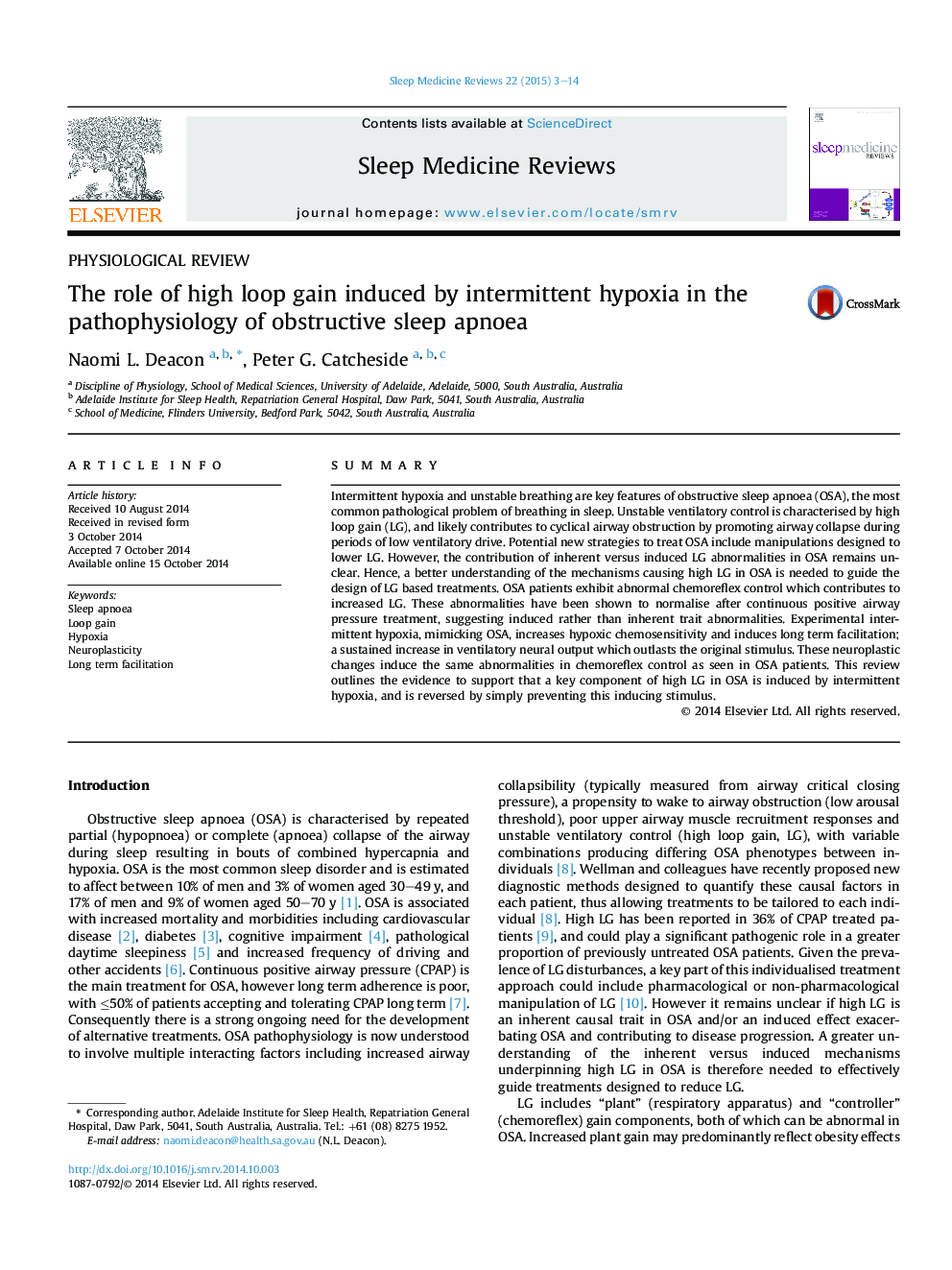| کد مقاله | کد نشریه | سال انتشار | مقاله انگلیسی | نسخه تمام متن |
|---|---|---|---|---|
| 3091365 | 1581362 | 2015 | 12 صفحه PDF | دانلود رایگان |
SummaryIntermittent hypoxia and unstable breathing are key features of obstructive sleep apnoea (OSA), the most common pathological problem of breathing in sleep. Unstable ventilatory control is characterised by high loop gain (LG), and likely contributes to cyclical airway obstruction by promoting airway collapse during periods of low ventilatory drive. Potential new strategies to treat OSA include manipulations designed to lower LG. However, the contribution of inherent versus induced LG abnormalities in OSA remains unclear. Hence, a better understanding of the mechanisms causing high LG in OSA is needed to guide the design of LG based treatments. OSA patients exhibit abnormal chemoreflex control which contributes to increased LG. These abnormalities have been shown to normalise after continuous positive airway pressure treatment, suggesting induced rather than inherent trait abnormalities. Experimental intermittent hypoxia, mimicking OSA, increases hypoxic chemosensitivity and induces long term facilitation; a sustained increase in ventilatory neural output which outlasts the original stimulus. These neuroplastic changes induce the same abnormalities in chemoreflex control as seen in OSA patients. This review outlines the evidence to support that a key component of high LG in OSA is induced by intermittent hypoxia, and is reversed by simply preventing this inducing stimulus.
Journal: Sleep Medicine Reviews - Volume 22, August 2015, Pages 3–14
